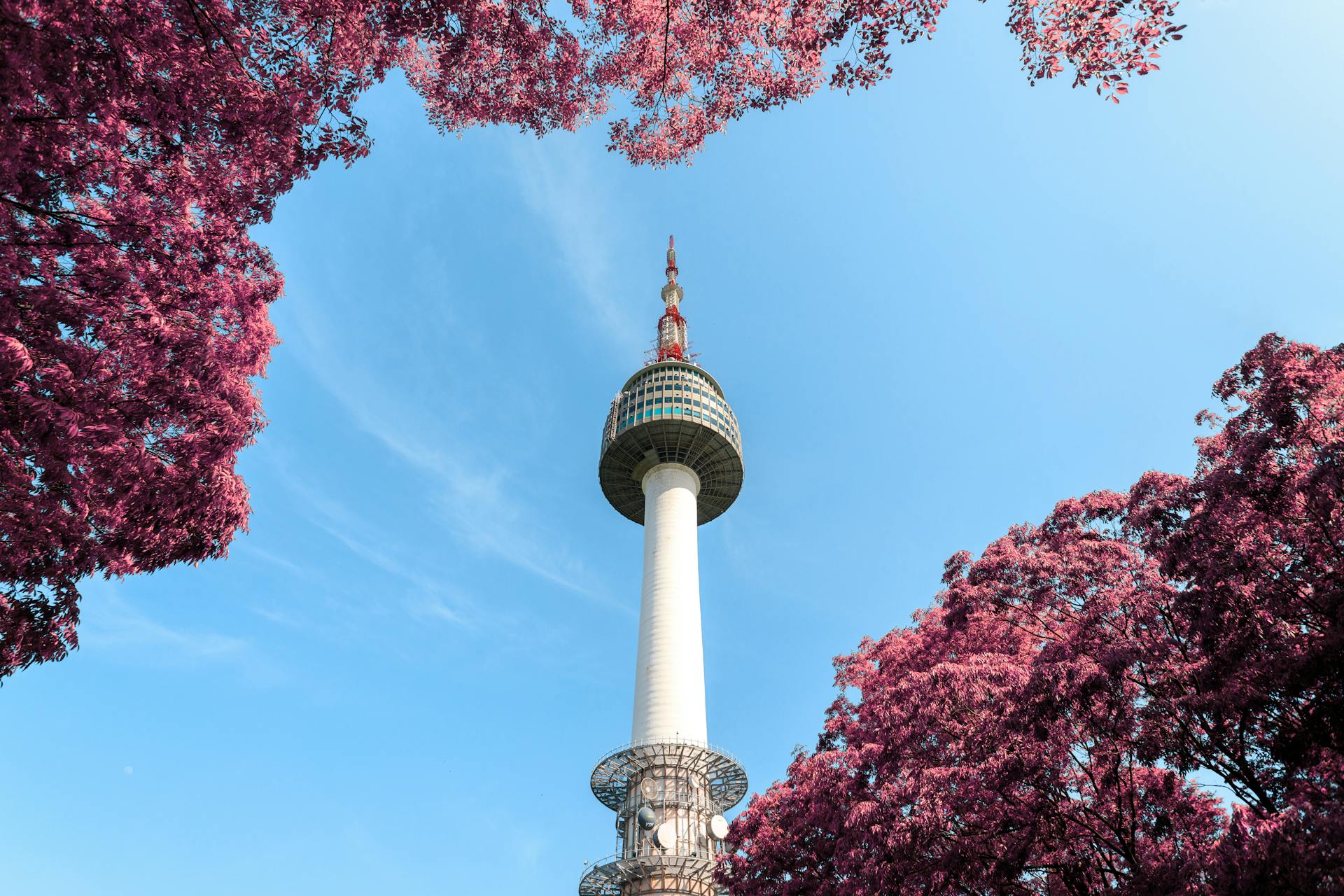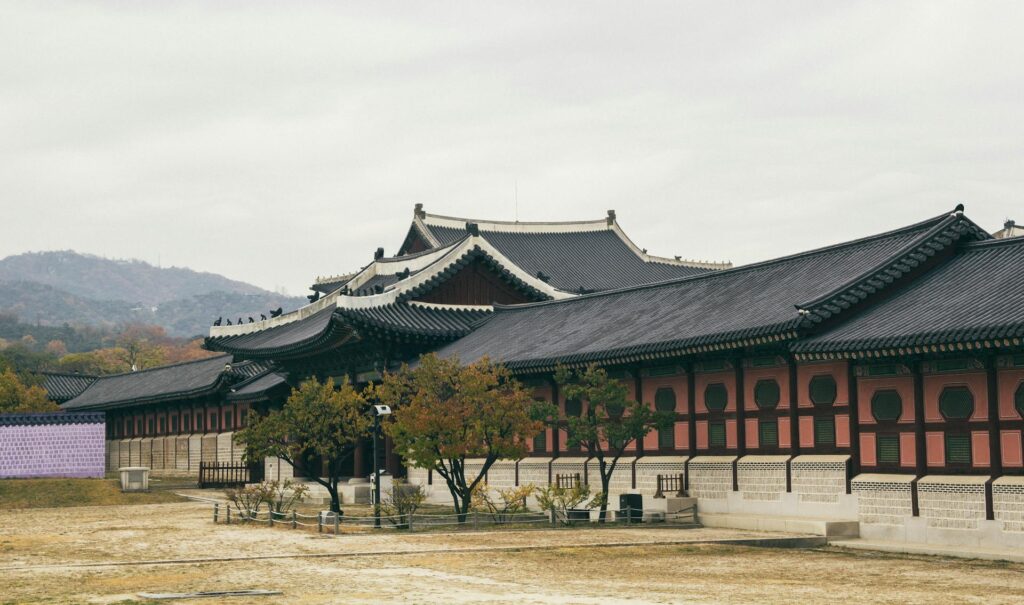Seoul Architecture: Where Technology Meets Tradition in South Korean Architecture
Ever wondered how a city can seamlessly blend the ultra-modern with the deeply traditional? Seoul, the bustling capital of South Korea, is a testament to this harmonious fusion, showcasing a unique architectural landscape that intrigues both residents and travelers alike. The city is a marvel of design where skyscrapers tower beside ancient palaces, creating a skyline that tells a story of innovation and heritage. As someone fascinated by the dynamic interplay of old and new, let me take you on a journey through Seoul architecture, where technology meets tradition in the most fascinating ways.
The Harmony of Old and New
Seoul’s architecture is a captivating dance between its historical roots and its futuristic aspirations. At the heart of this blend are the traditional hanok houses, characterized by their curved roofs and natural materials, offering a window into Korea’s past. These structures stand proudly in neighborhoods like Bukchon Hanok Village, where time seems to pause, allowing you to breathe in the tranquility of ancient Korea. Yet, just a stone’s throw away, the iconic Lotte World Tower soars into the sky, a symbol of South Korea’s rapid modernization. This juxtaposition highlights Seoul’s ability to honor its rich history while embracing the future.
In the vicinity of these contrasting structures, the Seoul architecture narrative unfolds further. The city is dotted with temples that whisper stories from centuries ago, like the Jogyesa Temple, nestled amid urban chaos, providing a serene escape for reflection. Meanwhile, the Dongdaemun Design Plaza (DDP), designed by the legendary Zaha Hadid, represents cutting-edge architectural prowess, with its sleek curves and innovative use of space. The coexistence of these elements is a testament to Seoul’s dedication to preserving its cultural legacy while pioneering architectural innovation.
The Influence of Technology
Technology plays a pivotal role in shaping Seoul’s architectural landscape, transforming the city into a hub of innovation. Smart buildings equipped with eco-friendly technologies demonstrate Seoul’s commitment to sustainability. Structures like the Seoul City Hall embody this approach, with its eco-conscious design featuring green roofs and energy-efficient systems. These advancements not only reduce environmental impact but also set a global standard for sustainable urban development.
Furthermore, Seoul’s embrace of technology extends beyond individual buildings. The city itself is a smart metropolis, boasting advanced infrastructure that enhances urban living. From smart traffic systems that alleviate congestion to intelligent public transportation networks, technology seamlessly integrates into the fabric of Seoul architecture. This forward-thinking approach ensures that the city remains at the forefront of modern living, providing residents with a high quality of life while maintaining its architectural charm.
Cultural Heritage Sites
Seoul architecture is deeply rooted in its cultural heritage, with sites like the Gyeongbokgung Palace exemplifying traditional Korean design. This grand palace, constructed during the Joseon Dynasty, is a masterpiece of symmetry and elegance, with its intricate details and expansive courtyards. Walking through its gates, you can almost hear the echoes of history, as the palace stands as a proud reminder of Korea’s regal past.
The preservation of such cultural landmarks is a priority for Seoul, ensuring that future generations can appreciate their historical significance. Efforts to restore and maintain these sites are evident in the meticulous care given to structures like Changdeokgung Palace, a UNESCO World Heritage site. Here, the blend of architecture and nature is perfectly balanced, embodying the Korean philosophy of harmony between humans and the environment.
Modern Architectural Marvels
Seoul’s skyline is punctuated by modern architectural marvels that capture the imagination. The 63 Building, once the tallest in the country, remains an iconic symbol of Seoul’s economic boom. Its golden facade glistens in the sunlight, a testament to the city’s progress and ambition. This skyscraper is a beacon of modernity, offering panoramic views of the city from its observation deck.
Another striking example of Seoul’s modern architecture is the COEX Mall, a sprawling complex that combines retail, entertainment, and convention spaces. Its innovative design integrates seamlessly with the urban environment, creating a vibrant hub for locals and tourists alike. These contemporary structures reflect Seoul’s dynamic spirit and its commitment to pushing the boundaries of architectural design.
The Role of Architects in Shaping Seoul
Architects play a crucial role in shaping Seoul’s architectural landscape, blending creativity with cultural sensitivity. Renowned architects like Kim Swoo-geun have left a lasting legacy, with works such as the Space Group building, which merges traditional Korean aesthetics with modern design principles. These visionaries have laid the groundwork for future generations, inspiring a new wave of architects who continue to innovate and redefine Seoul’s skyline.
The new generation of architects is embracing the challenge of integrating tradition with technology, creating structures that reflect Seoul’s unique identity. By drawing inspiration from the city’s rich architectural history and incorporating cutting-edge technology, these architects are ensuring that Seoul remains a vibrant and evolving metropolis.
The Impact of Globalization
Globalization has left an indelible mark on Seoul architecture, introducing diverse styles and influences from around the world. The city’s skyline is a testament to this, with international architects contributing to its ever-evolving landscape. The presence of global design firms has introduced new perspectives, resulting in a fusion of styles that enriches the architectural tapestry of Seoul.
However, this global influence has not overshadowed Seoul’s cultural identity. Instead, it has enhanced it, allowing for a dialogue between local and international design philosophies. This exchange fosters innovation and creativity, ensuring that Seoul architecture remains both relevant and rooted in its cultural heritage.

Urban Planning and Development
Urban planning is a critical component of Seoul’s architectural success, guiding the city’s growth while preserving its unique character. The development of green spaces, such as the Cheonggyecheon Stream, exemplifies Seoul’s commitment to creating a balanced urban environment. This revitalized waterway, once buried beneath concrete, now flows through the heart of the city, offering a peaceful retreat amid the urban hustle.
Efficient urban planning also addresses the need for sustainable development, with initiatives like the Seoul Green Belt preserving natural landscapes and limiting urban sprawl. These efforts ensure that Seoul remains a livable city, where architectural innovation coexists with environmental stewardship.
The Future of Seoul Architecture
The future of Seoul architecture is bright, with ongoing projects set to redefine the city’s skyline. The Yongsan International Business District, a mega-development designed by international architects, promises to be a landmark of sustainable urban design. This ambitious project aims to create a new urban center, showcasing the latest in architectural innovation and environmental sustainability.
As Seoul continues to grow and evolve, the city remains committed to balancing progress with preservation. By embracing new technologies and design philosophies, Seoul architecture will continue to captivate and inspire, offering a glimpse into the future while honoring its storied past.
Architectural Education and Innovation
Seoul is home to prestigious institutions that nurture the next generation of architects, fostering creativity and innovation. Universities such as Seoul National University and Korea University offer programs that blend traditional design principles with cutting-edge technology, preparing students to shape the future of Seoul architecture.
These educational institutions play a vital role in promoting architectural excellence, encouraging students to push the boundaries of design while respecting cultural heritage. By fostering a spirit of innovation and collaboration, Seoul’s architectural schools contribute to the city’s dynamic and evolving architectural landscape.
The Role of Museums and Exhibitions
Museums and exhibitions in Seoul provide a platform for showcasing architectural achievements and fostering dialogue about the future of design. The National Museum of Modern and Contemporary Art hosts exhibitions that explore the intersection of architecture and art, offering visitors a unique perspective on Seoul architecture.
These cultural institutions are essential in promoting architectural awareness and appreciation, providing a space for reflection and inspiration. By highlighting both historical and contemporary works, museums and exhibitions contribute to a deeper understanding of Seoul’s architectural journey.
Community Involvement in Architecture
Community involvement is a cornerstone of Seoul architecture, ensuring that development reflects the needs and aspirations of its residents. Participatory design processes empower communities to have a voice in shaping their environment, fostering a sense of ownership and pride.
Initiatives like the Seoul Metropolitan Government’s “Seoul Vision 2030” prioritize citizen engagement, encouraging feedback and collaboration in urban planning. By involving communities in the architectural process, Seoul creates a more inclusive and vibrant city, where architecture is not just about buildings but about people and their stories.
Conclusion
Seoul architecture is a fascinating blend of technology and tradition, a testament to the city’s ability to innovate while honoring its rich cultural heritage. From ancient palaces to futuristic skyscrapers, Seoul’s architectural landscape is a dynamic tapestry that captivates and inspires. As the city continues to evolve, it remains committed to balancing progress with preservation, ensuring that its architectural journey is one of innovation, sustainability, and cultural pride. Whether you’re a resident, a traveler, or simply an admirer of design, there’s no denying the allure of Seoul architecture, where the past and future converge in the most extraordinary ways.

Recent Posts
15 Floor Plan Graphic Styles That Will Elevate Your Presentation Game
The Role of Shadows in Architectural Storytelling
When Furniture Becomes Architecture: Blurring the Line